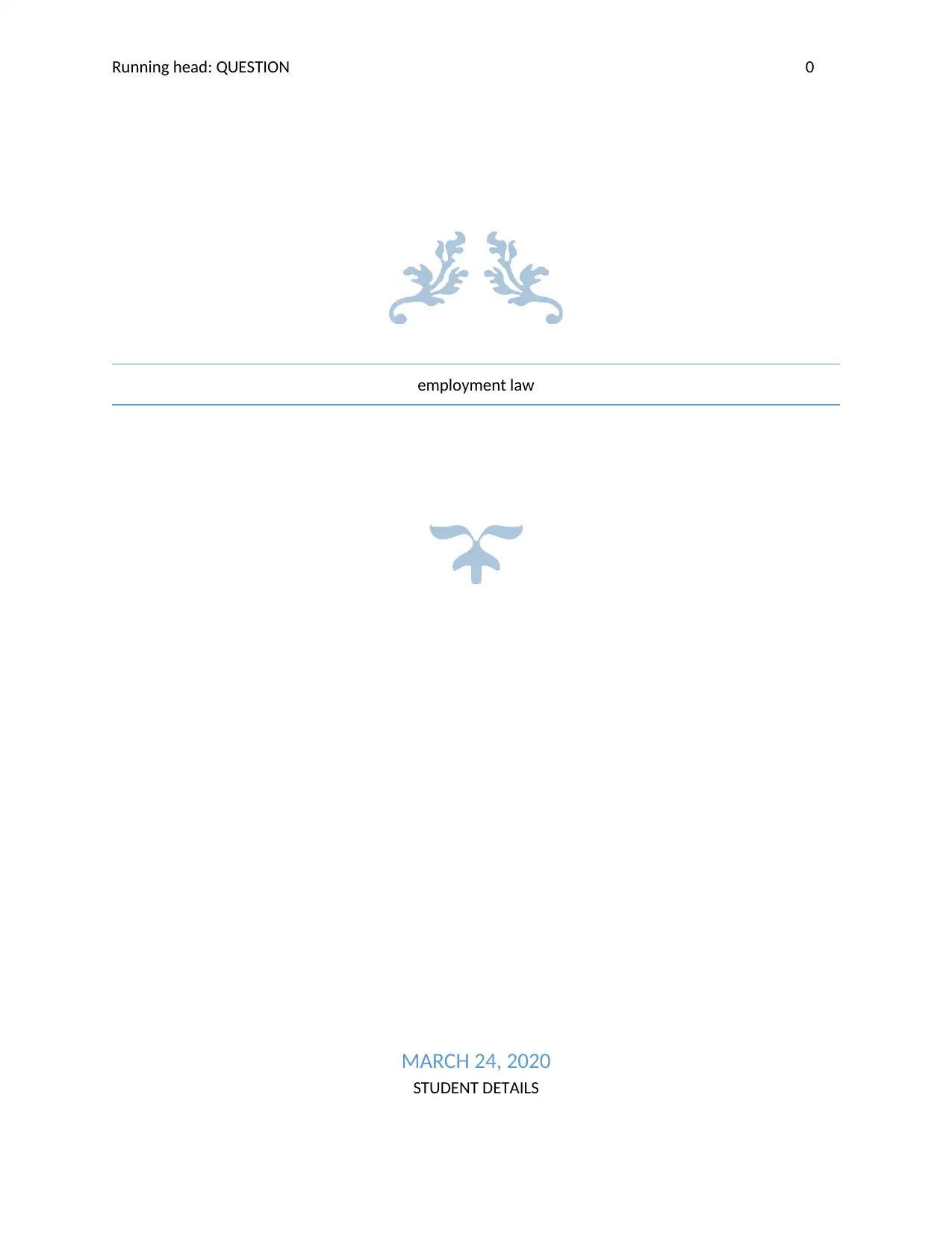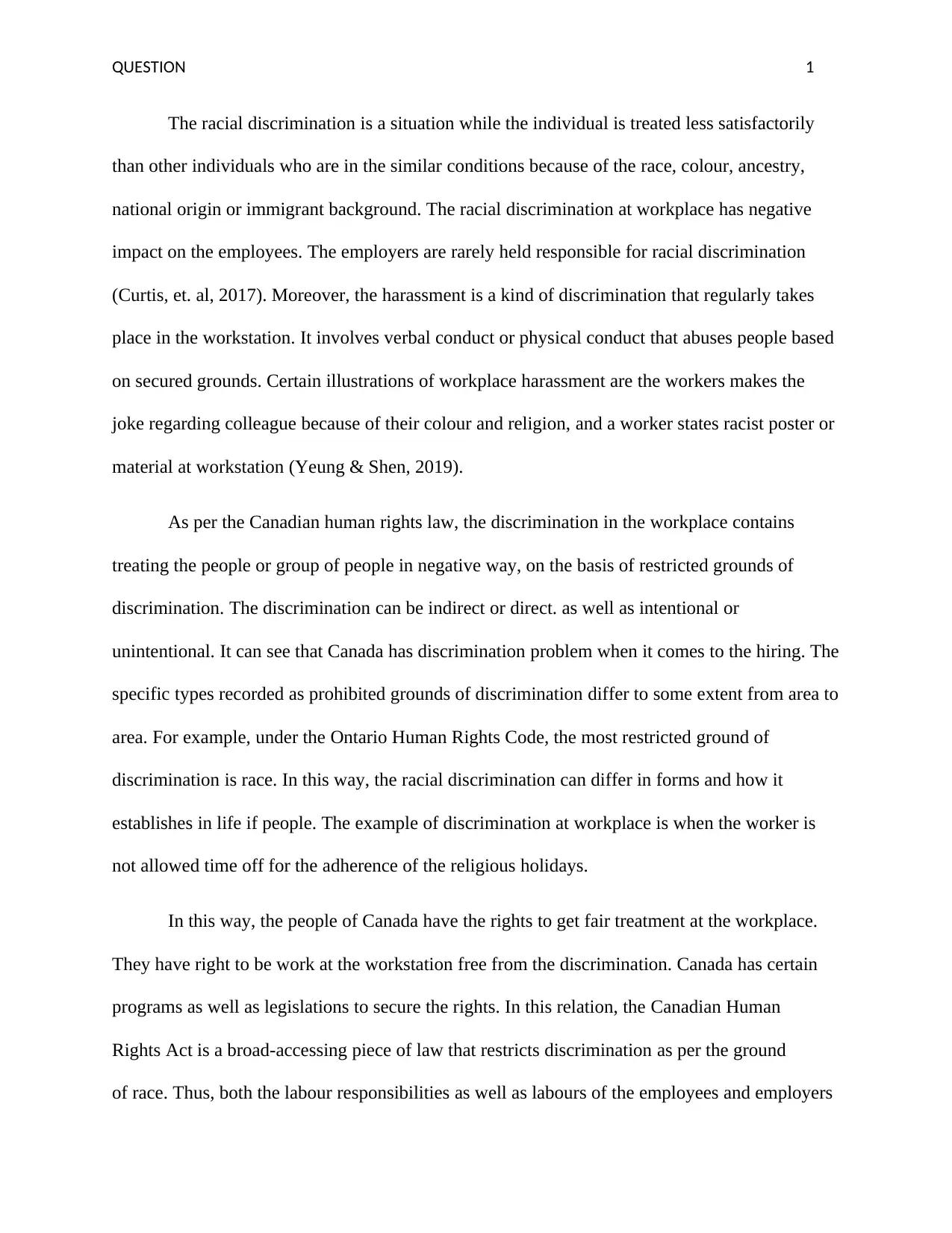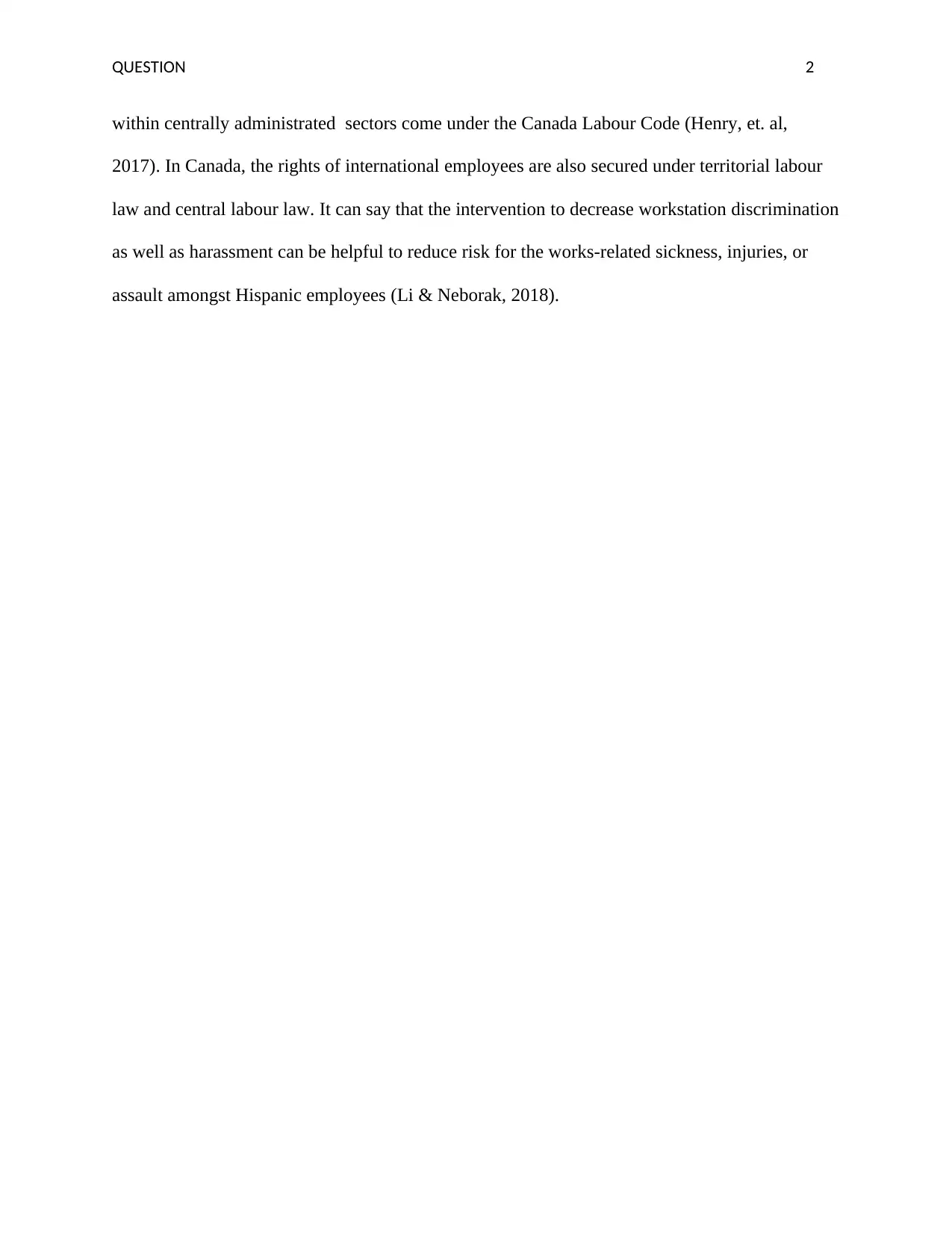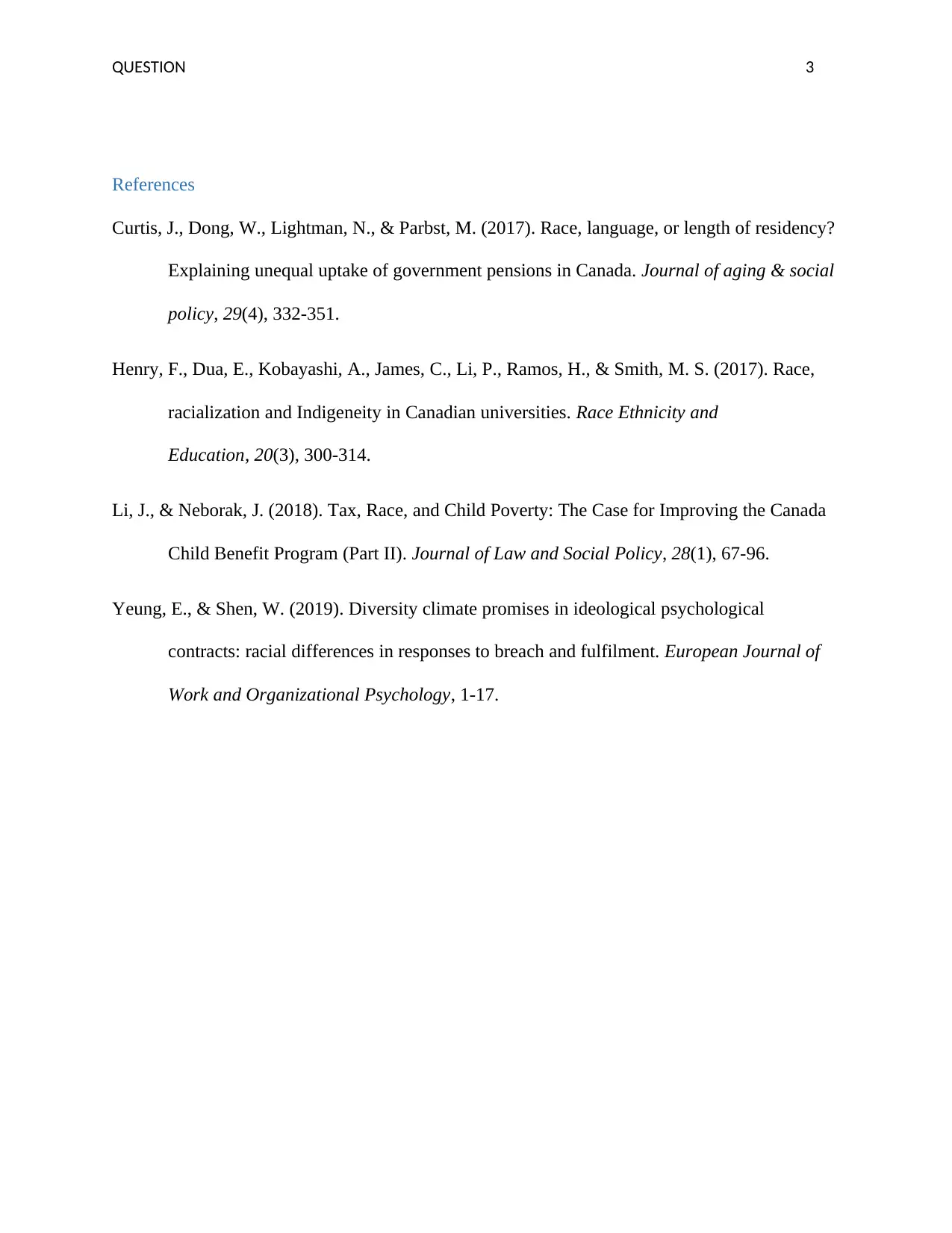Employment Law Report: Workplace Discrimination in Canadian Context
VerifiedAdded on 2022/08/27
|4
|664
|18
Report
AI Summary
This report delves into the critical issues of racial discrimination and harassment within the Canadian workplace context. It begins by defining racial discrimination and its impact, highlighting how it can manifest in various forms, including direct and indirect discrimination, as well as harassment. The report emphasizes the legal framework in Canada, referencing the Canadian Human Rights Act and the Ontario Human Rights Code, to illustrate the importance of protecting employee rights. It also discusses the role of employers and the responsibilities they hold to ensure a fair and equitable work environment. The report provides real-world examples and references relevant literature to underscore the significance of addressing and preventing workplace discrimination. It also explores the impact of discrimination on employees, including potential work-related sickness, injuries, or assault. This report aims to increase awareness and encourage the implementation of measures to mitigate risks and promote fair treatment for all employees in Canada.
1 out of 4











![[object Object]](/_next/static/media/star-bottom.7253800d.svg)